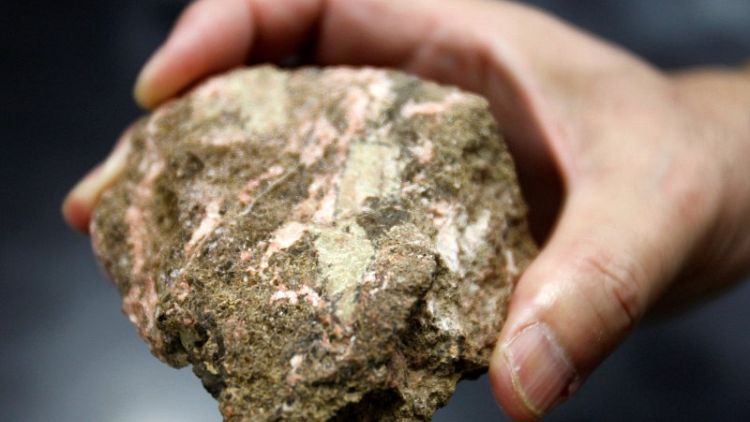By Tom Daly and Shivani Singh
BEIJING (Reuters) - Chinese rare earth prices are set to climb further beyond multi-year highs hit following a flurry of state media reports that Beijing could weaponise its supply-dominance of the prized minerals in its trade war with Washington.
Rare earths, a group of 17 elements that appear in low concentrations in the ground, are used in a wide-range of products stretching from lasers and military equipment to magnets found in consumer electronics.
China supplied 80% of the rare earths imported by the United States from 2014 to 2017, with Chinese state newspapers last month reporting Beijing could use that as leverage in the ongoing trade dispute between the two.
"(Magnet-related rare earths) are the ideal materials to weaponise ... because they are so critical to high-demand, highly-competitive, price-sensitive industries," said Ryan Castilloux, managing director of Adamas Intelligence, a consultancy that tracks rare earths markets.
"(Such rare earths) are collectively responsible for over 90% of the demand market's value each year ... (so they) will yield the most juice for the squeeze," Castilloux said by email from Toronto, adding that prices were set to keep rising.
Prices of dysprosium metal, used in magnets, high-powered lamps and nuclear control rods, are currently assessed by Asian Metal at their highest since June 2015 at 2,025 yuan ($292.98) per kg.
That is up nearly 14 percent from May 20, the day Chinese President Xi Jinping visited a rare earth plant, sparking speculation the materials could be the next front in the Sino-U.S. trade war.
For a graphic on rare earth export prices perk up after China rattles trade war sabre. click: https://tmsnrt.rs/2KjEK74
The price of neodymium metal, critical to the production of some magnets used in motors and turbines, has risen to its highest since last July at $63.25 a kg, up about 30% since May 20, according to Asian Metal.
The price of gadolinium oxide, used in medical imaging devices and fuel cells, is up 12.6 percent from May 20 at 192,500 yuan a tonne, the highest in five years.
Asian Metal is a research and price reporting agency that covers rare earth elements.
Chinese rare earth prices started to move "right after China announced the import ban" on rare earths from Myanmar, said Helen Lau, an analyst at Argonaut Securities in Hong Kong.
The state-run Securities Times reported on May 13 that customs in the southwestern province of Yunnan would ban imports of rare earths from neighbouring Myanmar, a key supplier of middle-heavy rare earth feedstock, from May 15.
"But then a couple of days later, you can see a big movement in the prices - so that was mainly because of this possible weaponising of rare earths," Lau said.
"If China indeed weaponises rare earths, the U.S. will not have enough supply because it needs some lead time to build their own processing capacity, which currently is zero," she added.
Another analyst, who asked not to be identified due to the sensitivity of the matter, said that six major rare earth producers in China held the most stocks in the spot market, giving them power over prices.
The six major producers are China Minmetals Rare Earth Co, Chinalco Rare Earth & Metals Co, Guangdong Rising Nonferrous, China Northern Rare Earth Group, China Southern Rare Earth Group and Xiamen Tungsten.
(Reporting by Tom Daly and Shivani Singh; Editing by Joseph Radford)



